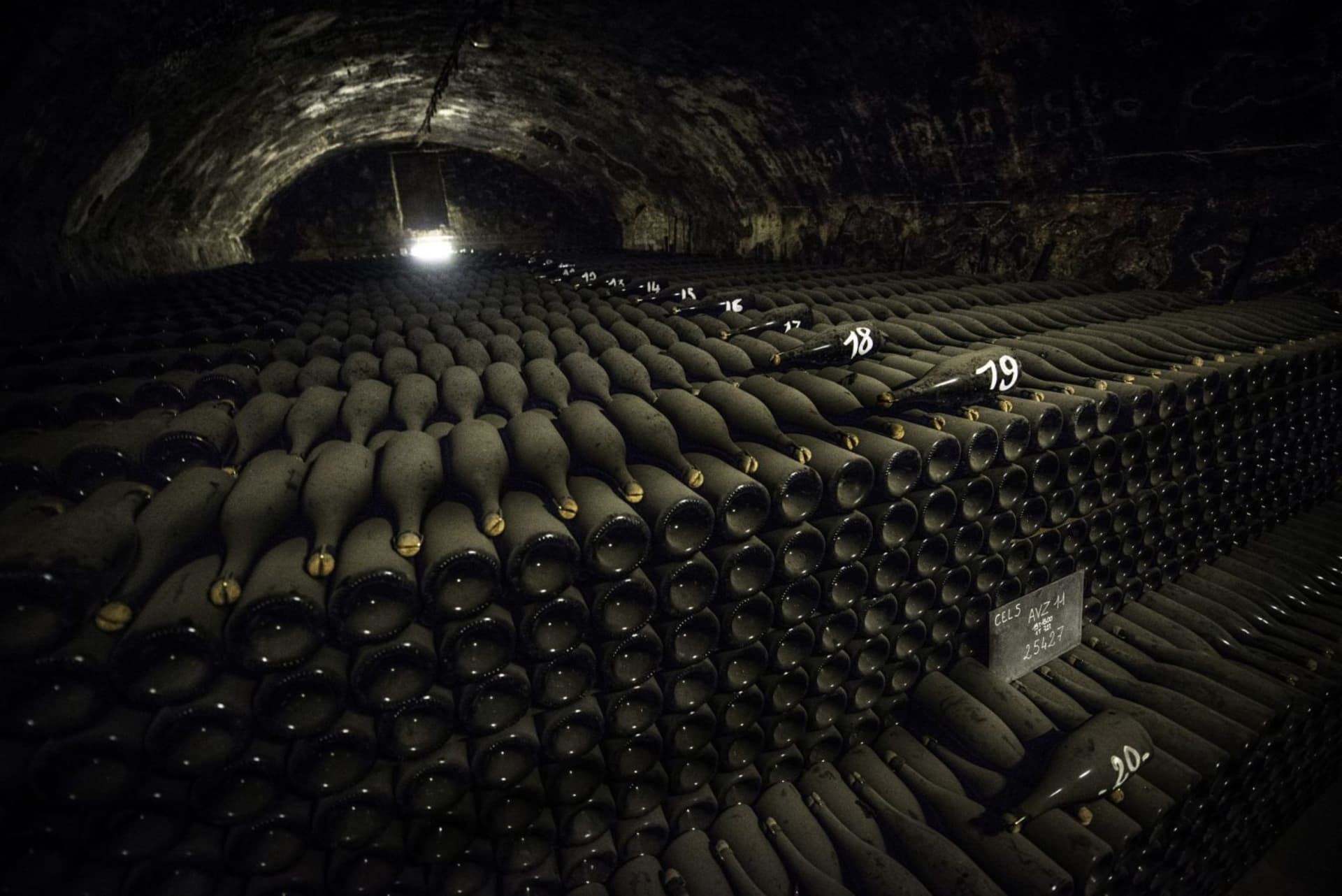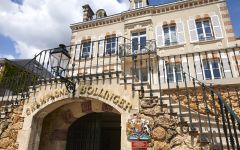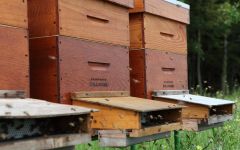Bollinger R.D. Extra Brut with Gift Box 2004
-
Robert
Parker -
Wine
Spectator



Product Details
Your Rating
Somm Note
Winemaker Notes
Bollinger R.D. will enhance all great gastronomic moments. R.D. 2004 marries perfectly with the most re ned dishes, such as pigeon cooked pink or roasted scallops. The intensity of the wine makes it the perfect partner for an aged Gruyère or Comté.
Professional Ratings
-
Robert Parker's Wine Advocate
Fermented in oak barrels and aged under natural corks for almost 13 years, Bollinger's 2004 R. D. Extra Brut blends 66% Pinot Noir with 34% Chardonnay from 16 crus, 88% of which are classified as Grand Cru. The wine opens with a very clear, deep, rich and aromatic but also pure and mineral-fresh nose of crushed rocks, cherries, brioche, pain aux raisin, white nougat, chalk and ripe, yellow-fleshed fruits. Highly elegant and complex on the weightless yet persistent and salty palate, this is an intense, densely woven, firmly structured yet elegant, beautifully refined and refreshing "recent disgorgement" (February 2018) that reveals just a kiss of oxidative flavors that adds even more complexity. A great Champagne on its way to improve over many years in the bottle.
-
Wine Spectator
The lovely nose of acacia blossom, toast and graphite leads to flavors of poached quince, fleur de sel, white cherry, lemon pith and almond skin in this dry and harmonious Champagne. Almost airy and ethereal in texture, yet the finely woven flavor range goes on and on, echoing on the finish. Disgorged June 2017. Drink now through 2034.
Other Vintages
2008-
James
Suckling -
Robert
Parker -
Wine
Spectator - Decanter
-
James
Suckling -
Robert
Parker -
Wine
Spectator - Decanter
-
James
Suckling -
Wilfred
Wong -
Wine &
Spirits -
Wine
Spectator - Decanter









In 1829, Champagne Bollinger introduced an instantly recognizable, dry, toasty style that connoisseurs around the globe have coveted ever since. Six generations of the Bollinger family have maintained that trademark style, and Bollinger is one of the rare Grande Marque houses to be owned, controlled and managed by the same family since it was founded.
With 399 acres of vineyards situated in the best Grands Crus and Premiers Crus villages, Bollinger relies on its own estate for nearly two-thirds of its grape requirements, including the Pinot Noir that gives its Champagne its distinctive roundness and elegance. Bollinger is one of a select few houses that can control the quality of its grape supply so carefully.
Bollinger is renowned for its stringent quality standards. It adheres to traditional methods, including individual vinification of each marc and cru, barrel fermentation (it is the last Champagne house to employ a full-time cooper) and extra-aging on the lees prior to disgorgement.
Members of the British Royal Court were among the first to embrace Bollinger’s unmistakable quality, and Queen Victoria made Bollinger the exclusive purveyor to the Court by Royal Warrant in 1884. Besides royalty, loyal devotees have included heads of state, celebrities and even famous fictional characters: Agent 007, James Bond, demands the exclusive Champagne Bollinger.

Representing the topmost expression of a Champagne house, a vintage Champagne is one made from the produce of a single, superior harvest year. Vintage Champagnes account for a mere 5% of total Champagne production and are produced about three times in a decade. Champagne is typically made as a blend of multiple years in order to preserve the house style; these will have non-vintage, or simply, NV on the label. The term, "vintage," as it applies to all wine, simply means a single harvest year.

Associated with luxury, celebration, and romance, the region, Champagne, is home to the world’s most prized sparkling wine. In order to bear the label, ‘Champagne’, a sparkling wine must originate from this northeastern region of France—called Champagne—and adhere to strict quality standards. Made up of the three towns Reims, Épernay, and Aÿ, it was here that the traditional method of sparkling wine production was both invented and perfected, birthing a winemaking technique as well as a flavor profile that is now emulated worldwide.
Well-drained, limestone and chalky soil defines much of the region, which lend a mineral component to its wines. Champagne’s cold, continental climate promotes ample acidity in its grapes but weather differences from year to year can create significant variation between vintages. While vintage Champagnes are produced in exceptional years, non-vintage cuvées are produced annually from a blend of several years in order to produce Champagnes that maintain a consistent house style.
With nearly negligible exceptions, . These can be blended together or bottled as individual varietal Champagnes, depending on the final style of wine desired. Chardonnay, the only white variety, contributes freshness, elegance, lively acidity and notes of citrus, orchard fruit and white flowers. Pinot Noir and its relative Pinot Meunier, provide the backbone to many blends, adding structure, body and supple red fruit flavors. Wines with a large proportion of Pinot Meunier will be ready to drink earlier, while Pinot Noir contributes to longevity. Whether it is white or rosé, most Champagne is made from a blend of red and white grapes—and uniquely, rosé is often produce by blending together red and white wine. A Champagne made exclusively from Chardonnay will be labeled as ‘blanc de blancs,’ while ones comprised of only red grapes are called ‘blanc de noirs.’
